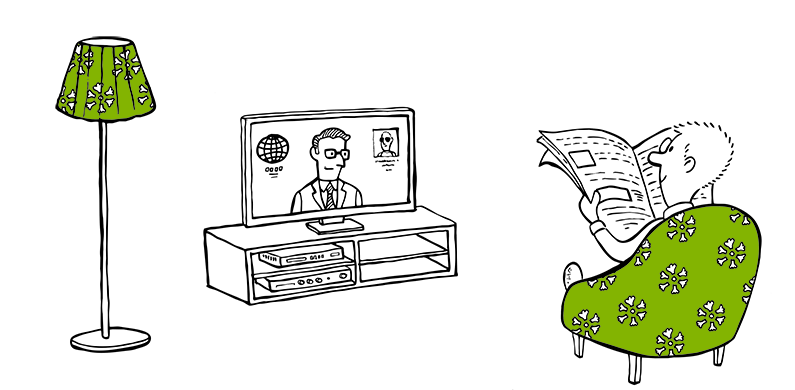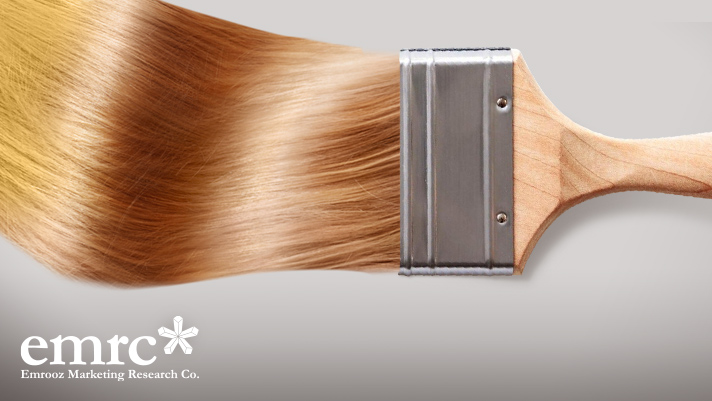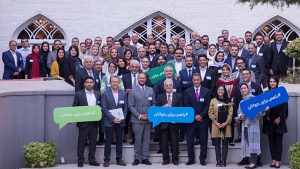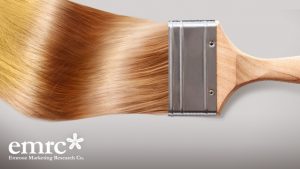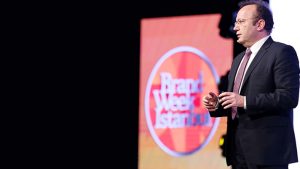
Analysis of Hair Color Consumers’ Behavior in Iran
The volume of cosmetics and hair color consumption in Iran has always been controversial and differing statistics have been published in this connection. Statistics that are open to different questions in terms of validity. In this regard, the segmentation of the consumers of hair color market in Iran is one of the interesting issues that has been studied by Emrooz Marketing Research Company (EMRC) and after investigating people over 15 years of age in 17 large cities of Iran, has presented significant results which are used in the analysis of hair color consumers’ behavior.
People using hair color in Iran are divided into five categories. Each of these sections accounts for a percentage of the market consumption.
Analysis of hair color consumers’ behavior in different age group
According to the published statistics, 13 percent of hair color consumers are those who are generally looking for being different and distinct. This group of people are in the age group of 25 to 39, are in the C2 and D socio-economic grade, and are married and housewives. This group, more than the norm of the society, use Prestige and Silk Color brands. Also, the use of the brand Igora in this group is much lower than the norm of the society.
In the continuation of the studies, the analysis of hair color consumers’ behavior shows that 30% of consumers are those who are looking for pleasure in life. This group of people are between 18 and 35 years old, are single and student or employee, are in the socio-economic grade C1, A and B, and hold bachelor or higher degrees. People who are after joy mostly use L’Oreal, Igora and Aquarelle brands.
Some 16% of the people being surveyed are those who are only after meeting their essential needs. This category of people, aged 40 to 55 years, are in the socio-economic grade D and E, hold diploma or lower, and are often married and housewives. Also, the analysis of hair color consumers’ behavior in this group showed that paying more for better quality, more comfort, or fashion does not fit in the lifestyle of these individuals. Spending money is one of the concerns of this group and, before doing anything, making any decision or spending money they think about it well. They buy affordable products and the analysis of their beliefs shows that they are environmentally friendly. The people in this group use much less than the norm of society brands like Igora and Silk Color.
Study Recommendation: EMRC; 51% of the Iranian teenagers and youth bought books in the past year
A new experience, the reason for using hair color among consumers
Some 17% of the hair color consumers are the people who are looking for new experiences. This category of people are between 15 and 24 years old, and in the BC1 socio-economic grade, are single, university student or employee. The analysis of hair color consumers’ behavior in this group is indicative of the convenience in spending money. These people enjoy spending time at the restaurant, buying clothes and traveling abroad. Joy, comfort and happiness are the main concepts in the lives of these people. They have non-traditional behavior and when they go for shopping, before visiting physical shops they go to the Internet. They also believe that online shopping makes life easier and welcome involvement of the children in decision-making processes.
Analysis of behavior of traditional and inexpensive hair color consumers
Some 24% of the consumers of hair color are traditional and thrifty people. This group of people are between 50 and 59 years old, are in the socio-economic grade D, hold diploma or lower, and most often are housewives. This group is sensitive to the price of the product, they basically buy from exhibitions and, as far as they can, look for discounts. With regard to the analysis of the consumers of traditional hair color, promotion can change their choice for the purchase as they prefer cheap price to quality. They have traditional views and resist against application of technology and its impact on modern life. Compared to the norm of the society, the Bewell brand has more fans among the people while the Starter and Bess brands are consumed less than the norm of the society in this group.
In continuation, if we intend to examine the amount of hair color consumption in each category, statistics show that those who are after new experiences, use the highest amount of hair color.
Colored hair and its care
After being colored, the hair will lose its softness and previous condition and most people in order to protect their hair go for hair care supplements. Statistics show that 35% of the hair color consumers use hair styler and 63% hair conditioner. The analysis of the hair color consumers’ behavior in this regard had interesting results. People looking for new experiences use hair styler products 34 percent more than others and those who merely seek to meet the essential needs use such products 27 percent less than others.
Also, 17% of hair color consumers use vitamin shampoo to protect their hair. Some 14% of them use shampoos for colored hair. Meanwhile, those who are after joy, use shampoos for colored hair 22% more than others.
The type of hair color used is also another case which was examined in the analysis of hair color consumers’ behavior. For example, 45% of the people who are after being different, their hair color is of the permanent chemical type. 14% of the people in this category use permanent herbal hair color while 16% use non-permanent hair color. This percentage also varies in other categories, and interesting data has been obtained in this regard. 53% of the people who are looking for pleasure use permanent chemical hair color. 18% of the people of this category use herbal hair color and 15% use non-permanent hair color.
Conclusion
Statistics presented in this report and the analysis of hair color consumers’ behavior renders outstanding assistance to active businesses in cosmetics and health products. Statistics that such businesses can present different products with affordable prices to the market. Also, by reviewing such statistics officials can obtain more accurate understanding of the consumers and make decisions with more awareness.
